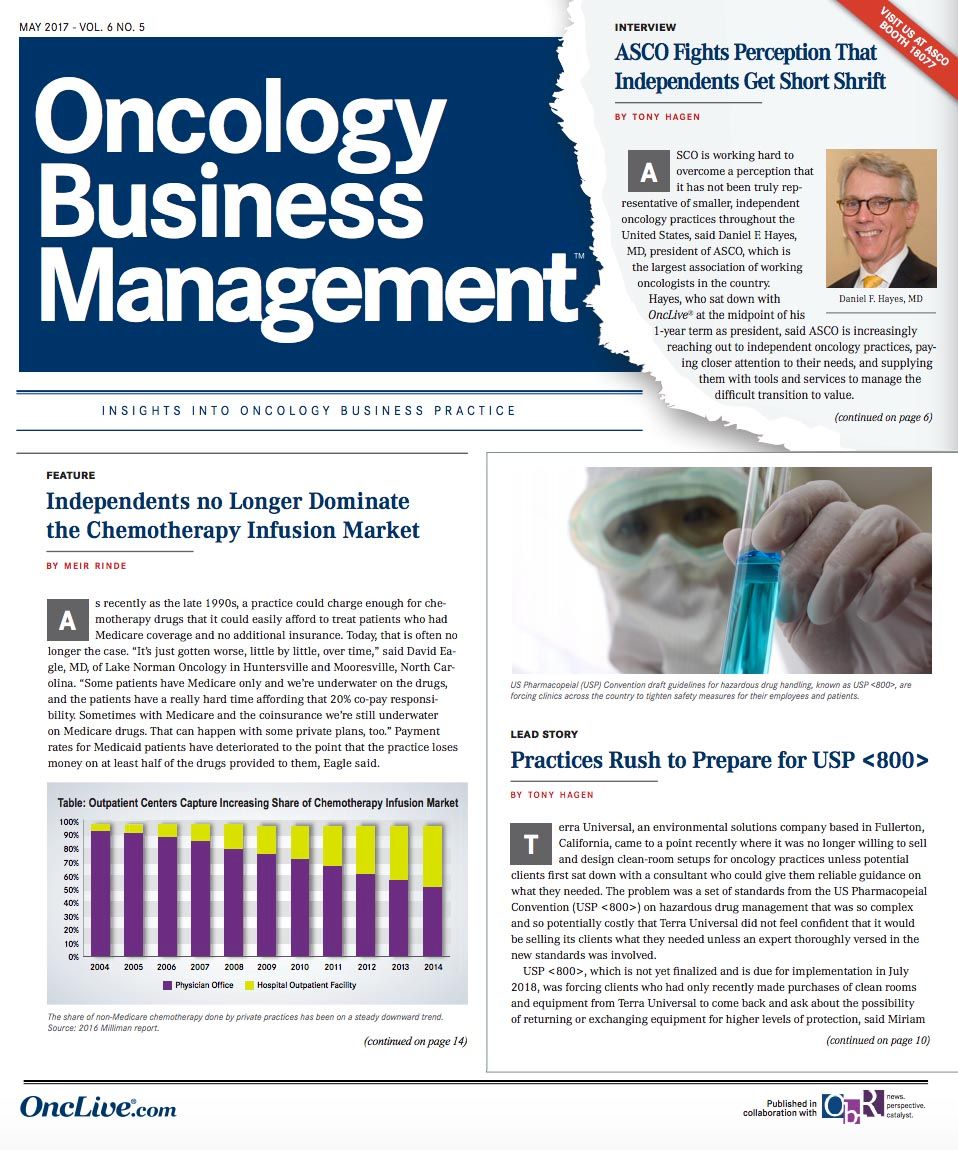It Takes a Big Mess to Create a Clean Room
The clock is ticking on the anticipated implementation of the US Pharmacopeial Convention Chapter 800 (USP ) standards for hazardous drug management, which are expected to become widely enforceable starting July 1, 2018.
OncLive Chairman,
Mike Hennessy
The clock is ticking on the anticipated implementation of the US Pharmacopeial Convention Chapter 800 (USP <800>) standards for hazardous drug (HD) management, which are expected to become widely enforceable starting July 1, 2018. These standards are so much more rigorous than existing ones that they have the potential to keep oncology practice administrators awake at night. Indeed, there has already been much angst over USP <800>. Administrators, interviewed for our lead story on the subject, on page 10, described the need for extensive renovations costing hundreds of thousands of dollars and causing widespread disruption to practice operations.
One representative of a company that sells clean rooms and related equipment said there was widespread confusion last year as practitioners who thought they were properly pre- pared came to realize that their investments would not conform to USP <800>. Many needed to start over. At that point, the company changed its policy and refused to sell more equipment unless practices spoke first with a consultant well versed in the newer standards.
Well-financed practices with room to expand are finding it easier to accommodate these changes, which in many cases involve creating separate rooms with managed air ow for HD compounding. Those we interviewed speculated that there are many oncology groups facing difficulty bringing their facilities up to the new level of acceptability. For some, the transition may require that they get out of the business of HD handling altogether. Patients would be referred to hospital outpatient centers instead.
For a Queens, New York, practice, meeting the new standard will cost $500,000, which they would prefer not to spend, an administrator said. The issue is not so much whether they have an environment that is modern and safe for patients and staff, but whether they can demonstrate that they are in full compliance with USP <800> if it becomes enforceable in New York. Someone may be able to argue in court that an illness could have originated from noncompliant facilities at the Queens practice, the administrator explained.
The new standards weren’t invented to bring grief to oncology practices. There has been a growing understanding of the dangers of HDs and the need for heightened controls on exposure. Our companion story on HD management discusses some of the milestones in this journey of discovery and the importance of staff training to not only educate workers on proper handling methods but spur them to become vigilant about their own safety. Read about it on page 12.
For some practices, USP <800> compliance may already be a moot topic. The infusion business is rapidly migrating to hospital outpatient centers, many of which are better financed, enjoy greater margins on payment than independent practices, and have the advantages of high volume. In a story on page 14 we discuss the drivers of this transformation in the infusion care landscape, rounding out this month’s focus on a dynamic and challenging aspect of oncology care. Be sure to read all 3 stories. Also check out our other coverage this month in Oncology Business ManagementTM. It includes software for successful Oncology Care Model management, radiotherapy savings, and the value of real-world evidence.




